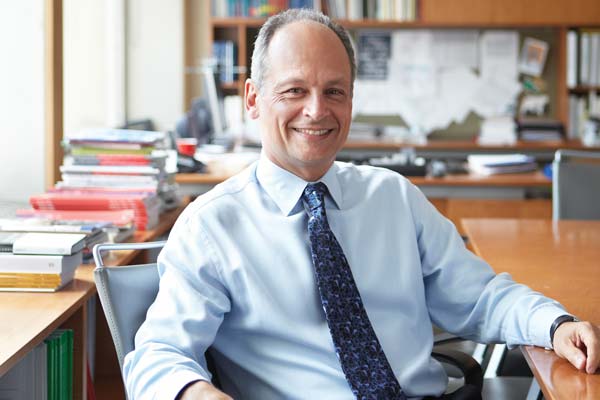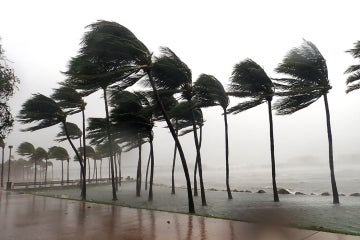
Global Cities, Global Partners
Published: December 21, 2012
The major collaboration between the University of Toronto and the University of São Paulo (USP) is fuelling excitement among scholars at both universities, particularly in the areas of neuroscience, global cities & innovation, oncology and international relations.
Leading scholars in those disciplines from U of T and USP met to brainstorm potential research avenues following the joint neuroscience symposium in São Paulo Dec. 7-8. While the collaborative research projects are only in the draft proposal stages, many areas of shared interest are already coming into focus.
Professor Meric Gertler, Dean of the Faculty of Arts & Science, was in São Paulo to take part in planning for the global cities & innovation collaboration, which will likely encompass many departments and faculties at U of T. U of T News asked Gertler to explain the key interests shared between U of T and USP, and what the global cities & innovation collaboration might look like:
Social Diversity
“We were struck by a lot of parallels between cities in Brazil and Canada, and especially those between São Paulo and Toronto. Although São Paulo is much larger, with the metropolitan region approaching 20 million in population, the two cities are quite similar in being very socially diverse. In Toronto’s case it’s the often repeated statistic about nearly half of the people living in this region having been born outside of Canada. In the case of São Paulo, the immigration is not as recent-- you’re talking about second-generation, third-generation children of immigrants-- but still comprising a very diverse society. There’s a large ethnic Japanese population, a Chinese population, an African population, German, Italian, and so on. And when you walk down the streets and look around, you can see the diversity that’s present. We thought that it would be fruitful to compare the two cities in these terms: the various ways in which they’ve coped with diversity and accommodated it and embraced it. We were struck by the realization that these are probably two really noteworthy examples of metropolitan regions around the world where this very high level of social diversity has indeed been accommodated very successfully. The questions are around, what strategies have been used to enhance social cohesion and social inclusion? How have immigrants gained access to the labour market and employment opportunities? And what role has public policy played in fostering that kind of inclusion?”
Socio-Economic Polarization
“While there are many positive things to say about both cities, there’s also a less positive aspect to examine as well, with questions around poverty and growing socio-economic polarization. We have certainly seen those trends in Toronto and they are well-recognized in most Brazilian cities including São Paulo. So the thought here would be to compare those trends in the two cities and their consequences for social harmony, safety, human security and even economic stability. Because one can make the case that if a city region becomes too unequal in terms of the distribution of income or if it develops really entrenched poverty, this can undermine its economic competitiveness as well. Here again, we’re interested in both documenting the trend and trying to understand different policies enacted locally and at senior levels to counteract those trends. There’s also an important geographical dimension to this issue, because we’ve seen in both cities the emergence of districts where poverty has become particularly entrenched. Here too, questions focus on the role public policy has played or could play in helping to mitigate those developments and improve opportunities in those neighbourhoods.”
Urban Infrastructure and Environmental Sustainability
“Some of the most pressing challenges facing Brazilian and Canadian cities, São Paulo and Toronto in particular, are in areas like transportation systems, waste management, and energy. What trends are emerging in terms of the environmental impacts of urban development? And in what ways have cities have tried to reduce their carbon footprint? Both cities are challenged in this regard, particularly in the transportation realm. Torontonians love to complain about gridlock here but you haven’t seen gridlock ‘til you’ve been to São Paulo. It is quite staggering—it’s very much a car-based city. There is some rapid transit, but investments in transit have not kept up with demand or population growth. It’s a city that is ripe for investments in fixed-rail rapid transit, because it does have very high densities, and that’s exactly the right condition for supporting subways. They are investing, especially as there is some urgency for them with the World Cup coming soon and the Olympics coming a couple years later. Toronto, similarly, has to plan for the PanAm Games. So these major international events are relevant in both cities, but we have both had a longstanding need for improving our transit systems and integrating those systems and land-use planning more effectively.”
Safety and Crime and Healthy Cities
“This area will explore questions like: How safe are our cities? How healthy are our cities? Also, issues related to homelessness, poverty, and linking the social condition of cities to health outcomes, where there are important public health dimensions. Here too there are many interesting lessons to be learned by comparing the circumstances in São Paulo and Toronto and looking at evidence of innovations to address urban health issues. But we were really struck by how pressing the crime and personal safety issues are in Brazilian cities, perhaps an order of magnitude more than they are here, though we have our own challenges in that area. It is clearly an issue of major concern to our Brazilian colleagues—safety and crime against people and properties in Brazilian cities.”
Economics
“This focus here is on the economic foundations of Brazilian and Canadian cities, how these are changing, particularly in light of the period of turbulence we’ve come through in the global economy. So, how resilient has Toronto been? How resilient has São Paulo been? Here again, there are some interesting parallels. Both cities have actually fared quite well, particularly relative to other cities around the world. Related to that are the questions around the geography of innovation: to what extent has innovative economic activity emerged from cities like Toronto and São Paulo? What conditions are present in these cities that have supported the expansion of innovative activity in those places? What role has public policy played in fostering this? And we’re also particularly interested in the role that universities have played in terms of anchoring or stimulating innovative economic development.”
Student Involvement
“Students, we hope and expect, will be involved integrally in the research process. Graduate students are always most likely to be involved in these things but I think there are opportunities here to get senior undergraduates involved in these projects as well. Certainly Arts & Science is one of the many divisions that is trying to encourage our students to avail themselves of international opportunities and we see these joint research projects as really setting the table for not only giving our students access to a research opportunity but also an international opportunity. Our students could imagine being involved in an exchange with Brazilian students in which the faculty associated with these research projects could play a lead role. So we can address many of our academic objectives this way.”
Long-Term Relationship-Building
“I hope we will be able to foster and enable lasting research partnerships and collaborations between the great scholars at our two universities. One of the reasons why we have chosen to partner with USP is that we see in them an institution of comparable quality, stature, and breadth, situated in one of the world’s great cities and in one of the world’s most rapidly developing and growing national economies. This collaboration will give us and our scholars tremendous insight into the emergence of Brazil as a world power, and into the kinds of innovative responses to urban challenges that Brazilian cities are developing. It’s a fantastic window on that process. It will also, we hope, open up new opportunities for our students to be involved in research and in international experiences in a very interesting part of the world. We are also interested in bringing in public sector partners who would be valued participants in the joint research process, given how interested we are in policy questions. When I was in São Paulo I met a private entrepreneur who has created a new institute for urban development, using some of his wealth from business ventures to create a non-profit entity designed to address urban issues in São Paulo that neither government nor the private market have been able to address satisfactorily. It would be wonderful to have those kinds of actors involved in this collaborative process too.
Photo of São Paulo skyline by Ndecam via Flickr.



